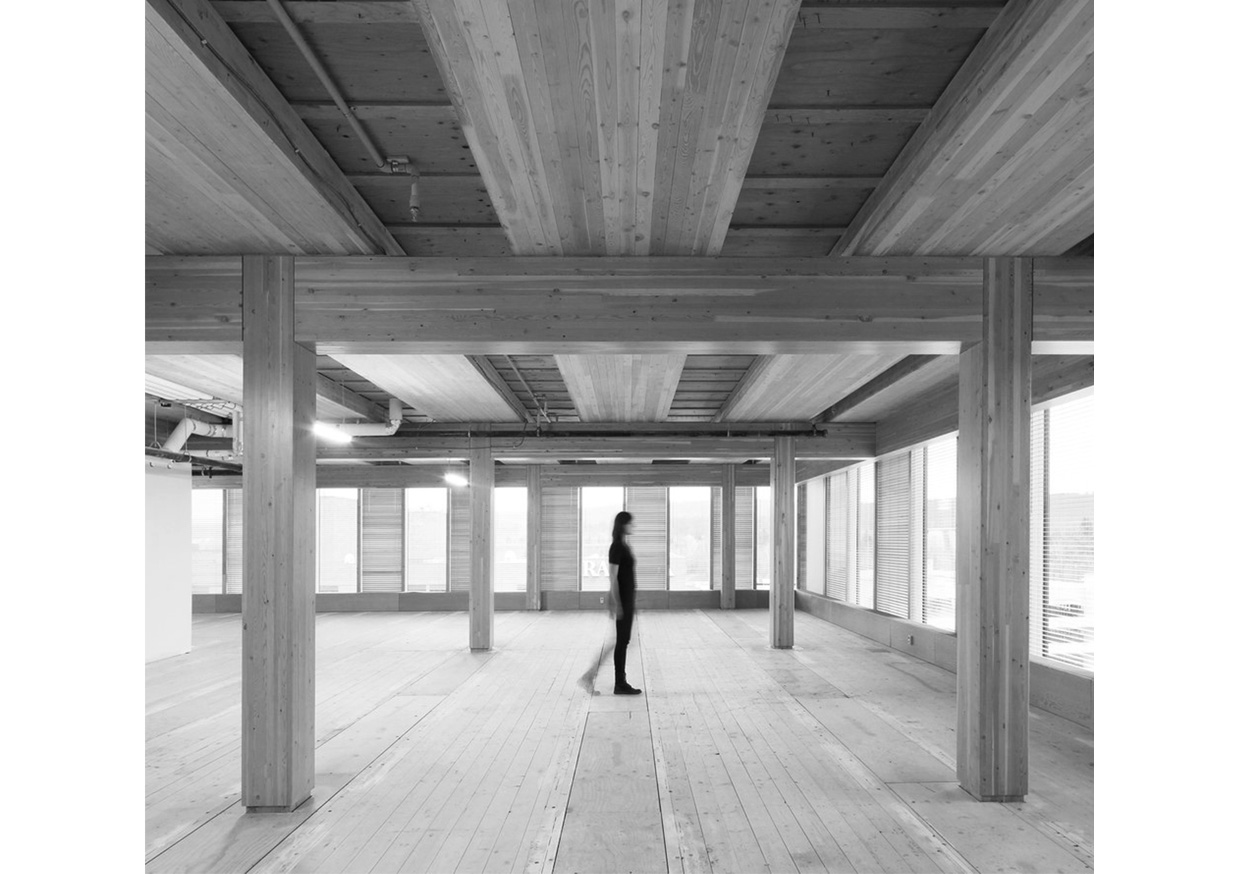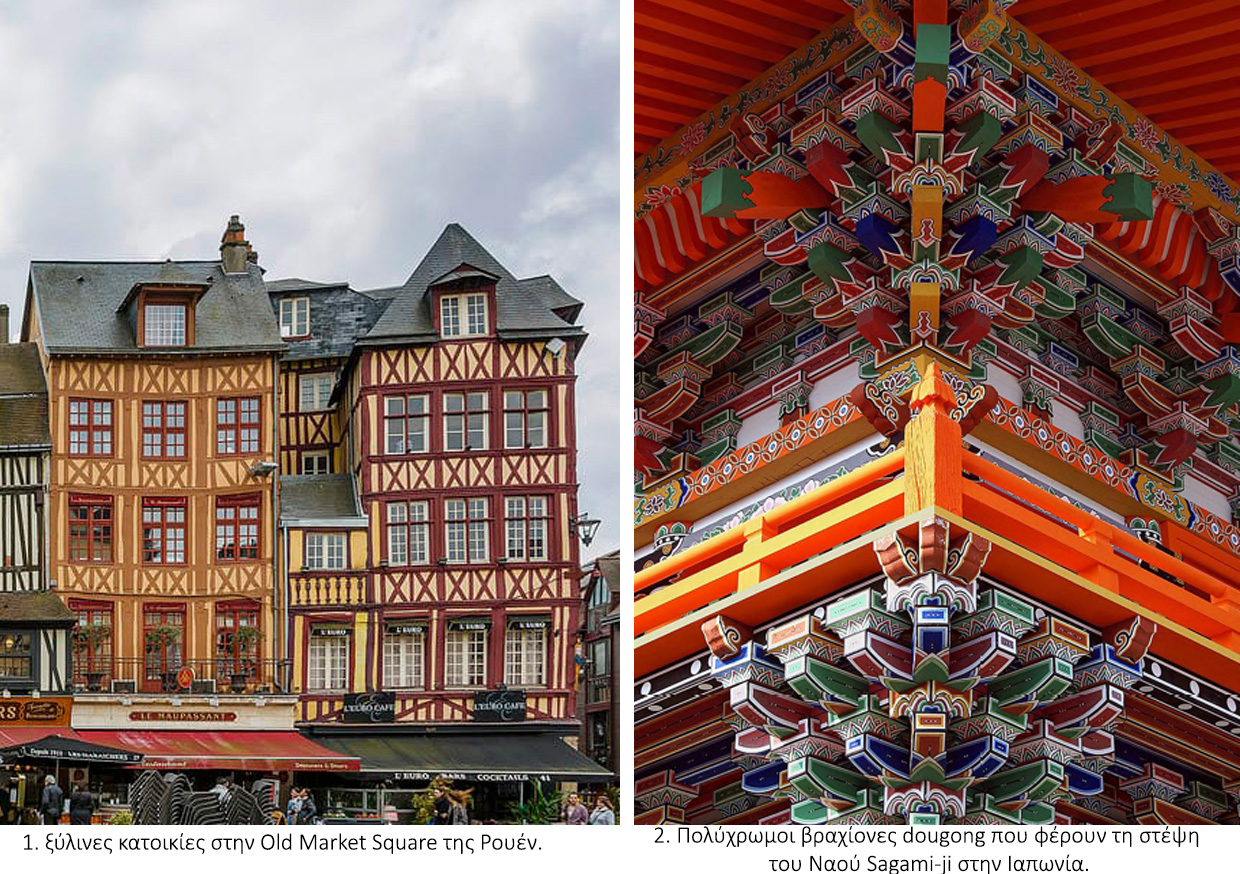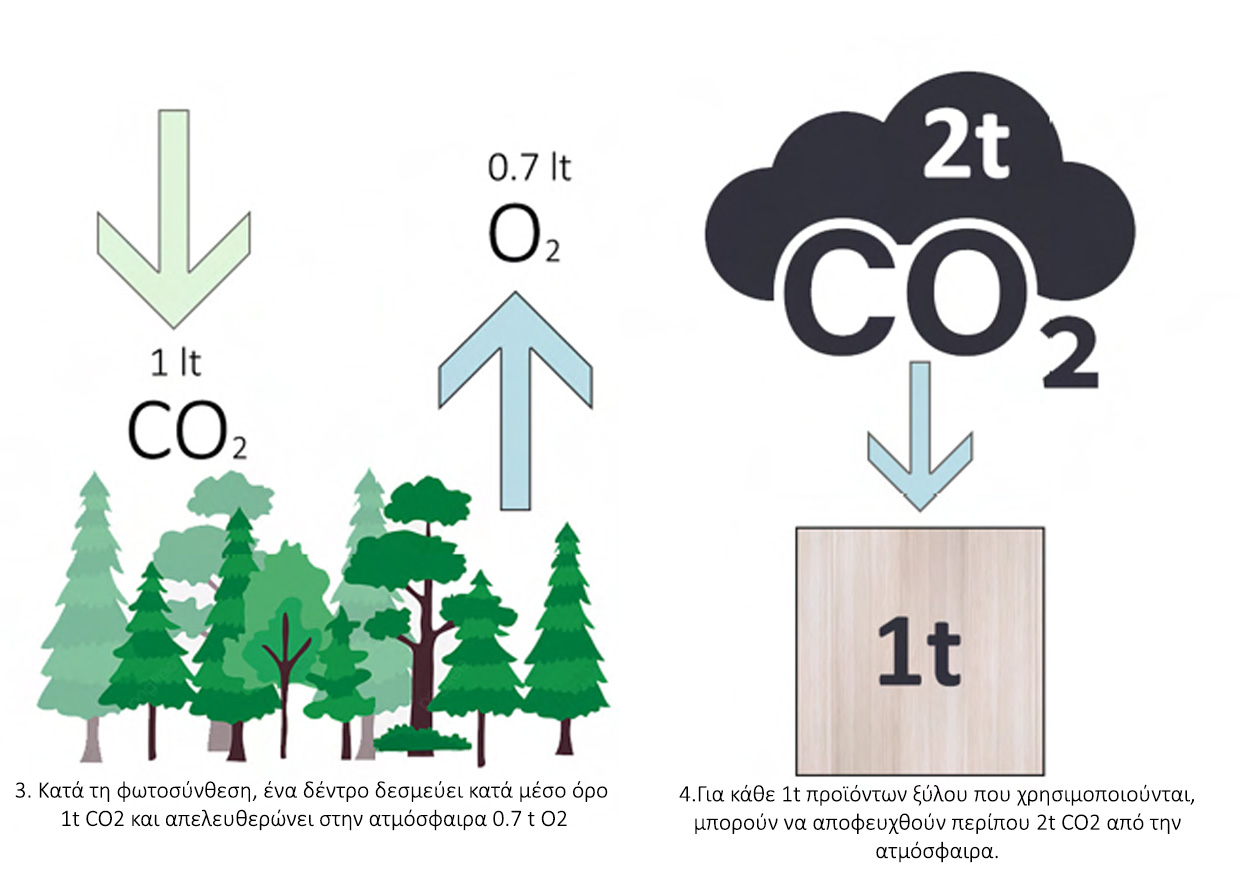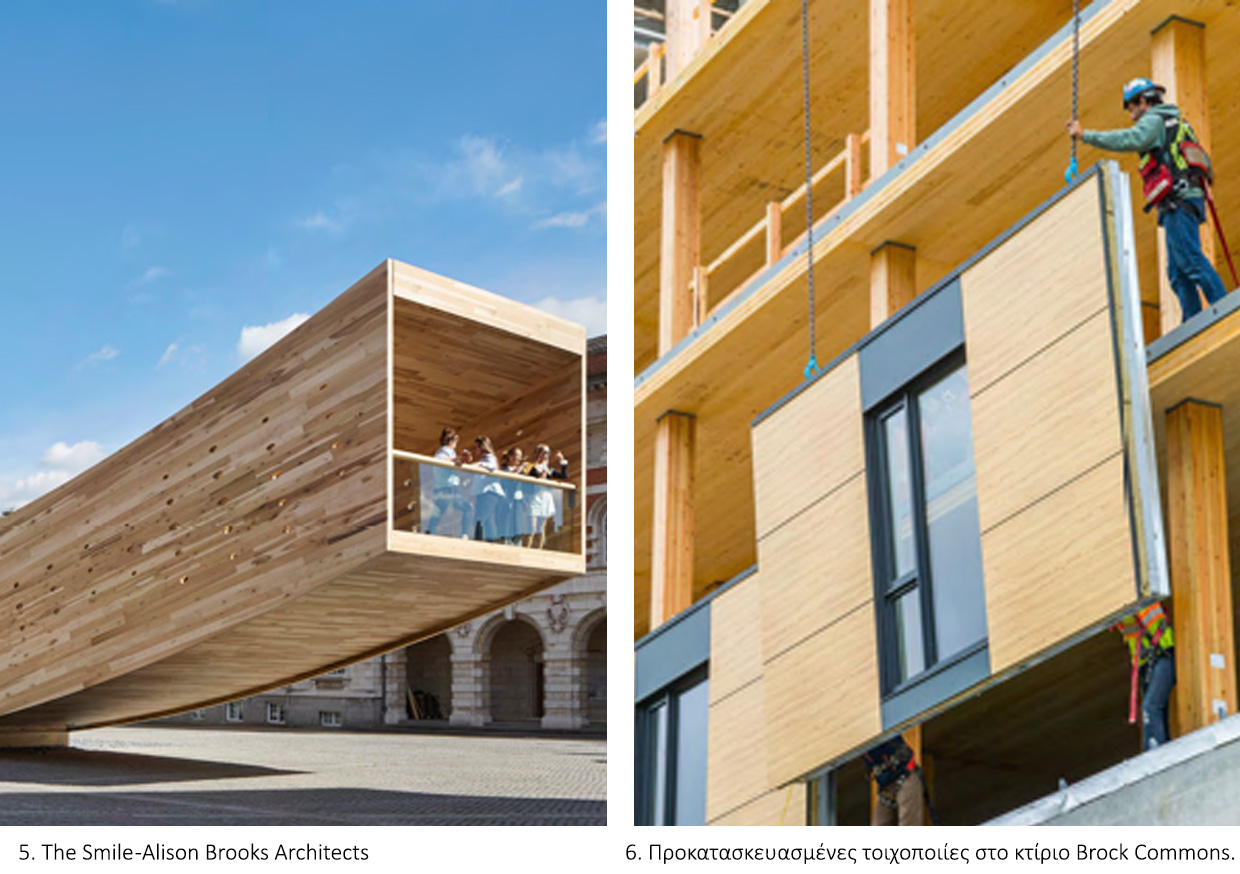The aim of this thesis is to investigate the properties and the role of wood in modern architecture, and the causes of its resurgence as a main structural material in the society of the 21st century. Meanwhile it tries to discover whether wood meets the current environmental, structural, energy and aesthetic demands and standards, so wooden buildings can become a common occurrence in the cities of the 21st century.
The first section of the thesis is called “Wood Through Time and Space” and investigates the part wood played as a material in the structural technology of the prehistoric and later civilizations. Its unique characteristics and its abundance in nature, captivated the interest of various civilizations and across the world and as a result, unique and ground-breaking structurescoming in varying degrees of difficulty were constructed, that served as refuge, as religious centers, and cultural points of each civilization. Through the passage of time, the expertise on wooden technology spread all over the planet. Thus, a wide tradition on wooden structural systems was formed, adapted in the demands, and needs of each region and civilization. In this context, an-all-time analysis of some traditional timber construction systems from the antiquity up to the start of the 20th century is realized, to ascertain the multidimensional meaning of wood as a material for the people and the architecture through the passage of time.
The next section is called “Wood as an Ecological Material” and is dedicated to the ecological character of wood as a material. At first a short investigation on the circumstances and the crucial problems that the modern society is obliged to face, and on the necessity of the ecological materials is conducted. Afterwards, the sustainable and ecological properties of both wood and forests are put under the microscope, to explain the resurgence of wood as a sustainable alternative. Therefore, terms such as sustainability, life cycle analysis, embodied energy, environmental footprint, CO2 emissions and, carbon sequestration, are being analysed and discussed.
At the third and final section of the thesis that is called “Wood as a Modern Material”, wood is presented with its modern form, as an engineered product. Therefore, this section focuses on the properties of the Engineered Wood Products (EWPs) and the possibilities they can offer on various sectors, such as the building sector, to determine whether they can replace well-used, yet energy consuming materials such as concrete and steel. It also focuses on the modern timber construction systems that can be found on buildings, and the architects that have adapted said practices such as Kengo Kuma, Michael Green, Alex de Rijke and Alison Brooks. Hence, the analysis and presentation of some smaller and larger sized timber buildings and constructions is performed, to investigate the presence and capabilities of the EWPs in modern architecture.
The fundamental conclusion of this thesis is that wood in its modern form, is a material with many opportunities, that keeps offering new prospects in modern architecture, such as design, construction and morphologic possibilities that weren’t available through wood in its natural form. At the same time, its intense ecological profile, can contribute greatly at the solution of the modern environmental problems, signalling a new age for the planet, that will successfully combine technology, sustainability, and aesthetics. However, wood should always be used with respect and responsibility towards the material itself and its environment, otherwise the results will be contradictory. All information used for this thesis was mainly excerpted from online and printed books, journal articles and reports, construction manuals and articles from online architectural magazines and websites.





